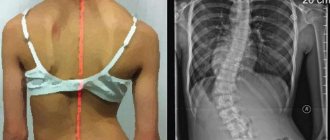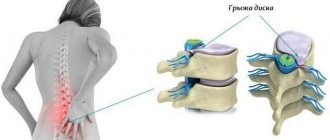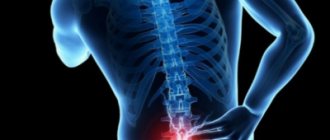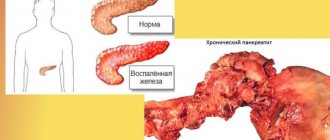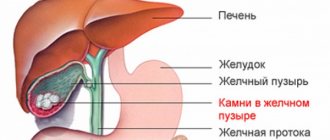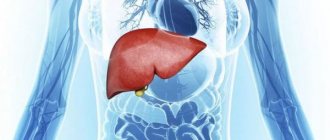Lactic acid production
The first and most common reason why your abs hurt after a workout is lactic acid. The thing is that during intense physical activity, biochemical reactions begin to occur in the muscles - lactic acid is produced. During muscle loading, it tends to accumulate in the muscles involved in the exercises.
© shutterstock
It is lactic acid that causes such a familiar burning sensation in the muscles, which can last for some time (usually no longer than 30 minutes) after stopping physical exercise. After a short period, all unpleasant sensations disappear.
It is simply impossible to have any influence on this process, since it is the norm during physical activity . Therefore, if discomfort occurs in the muscles, you should just wait a while and there will be no trace of pain.
Why does it hurt
Transient discomfort that occurs in the back and abdomen at the same time is called radiating or wandering in medicine. The mechanism of their development is as follows: the focus of the pathological process is in one place, but due to irritation of the branches of the nerves that pass through it, the pain spreads to other areas.
Anatomically, the organs of the abdominal cavity and the structures of the spine are located in close proximity to each other and are innervated by nerves extending from the spinal cord , so people suffering from diseases of the musculoskeletal system and the digestive tract quite often have back and stomach pain.
Atypical loads
Often, after a long period of absence of any exercise, the abs and abdominal muscles may ache. This is due to the fact that when muscles are not exposed to stress for a long time, they begin to lose their elasticity. As a result, during intense physical activity, muscle fibers can be injured, which causes unpleasant painful sensations.
© shutterstock
This phenomenon is normal after a long break between physical activity and does not pose a particular danger to the body and human health.
You can get rid of muscle pain in the abdominal and abdominal areas by following these recommendations:
- it is necessary to increase physical activity gradually;
- take proper breaks between workouts to give your muscles the necessary rest to recover;
- At the beginning of the workout, do muscle stretching, which is a necessary preparatory stage before intense exercise.
Can the lower abdomen hurt with osteochondrosis?
Above we talked in general terms about whether the stomach can hurt with osteochondrosis, now we will dwell on each point in more detail.
In order to understand whether osteochondrosis can radiate to the stomach, you need to find out which radicular nerve is responsible for each organ and department:
- T4 – innervates the gallbladder and common bile duct (compression of it can cause gallstones to form and jaundice to appear);
- T5 – responsible for the liver (provokes liver dysfunction);
- T6 and T7 - are responsible for the functioning of the stomach, duodenum and pancreas (if these radicular nerves are damaged, gastritis, indigestion, and ulcers occur);
- T12 – innervation of the small and large intestines, fallopian tubes (indigestion, constipation, diarrhea, bloating, pathologies of the female genital organs);
- L1, L2 – innervate the appendix, partially the abdominal cavity, and the cecum (compression causes constipation, diarrhea, and colitis may develop);
- L3 - bladder (bladder dysfunction and impotence may occur);
- C0 – is responsible for the function of the rectum (damage to this root is the most common cause of hemorrhoids and disruption of the pelvic organs).
Now it becomes clear whether osteochondrosis can cause pain in the lower abdomen and which radicular nerves are affected. Thus, by establishing the exact localization of pain, a preliminary diagnosis can be made in advance and targeted examinations can be carried out. So, if the pain spreads across the lower abdomen, then you should not do a simultaneous MRI examination of the lumbosacral and thoracic region. Only an image of the lumbosacral spine will be sufficient. And if a person’s pain is localized in the area of the liver, gallbladder and stomach, then it is recommended, on the contrary, to take an MRI image of the thoracic spine. Also in this case, it is necessary to conduct an FGDS examination and ultrasound of the internal organs.
Overvoltage
In pursuit of the ideal body and shape, inexperienced athletes often make serious mistakes in the form of constant intense loads. Overexertion can cause pain in the abdominal muscles, but there may not be a visible result.
© shutterstock
It is important to understand that intense loads during training are not always the key to achieving beautiful, attractive shapes. This is explained by the fact that when physical activity is irrationally distributed among different muscle groups, and the emphasis is, for example, on the abs, the abdominal muscles at that moment become “clogged” because they do not receive proper rest. All this is often accompanied by uncomfortable painful sensations that may not go away for a long time.
You can avoid pain in the abdominal area during tension, or at least alleviate it, by using the following recommendations:
- give the muscles the necessary rest between physical activities;
- rationally distribute loads between all muscle groups;
- normalize sleep and rest patterns.
Degrees of abdominal muscle stretch
Diagram of abdominal muscles
Experts distinguish 3 degrees of abdominal wall muscle strain:
- Moderate, when mild pain subsides within a few days.
- Average degree. Symptoms go away within a couple of weeks. In this case, patients require qualified medical care. Recovery of such patients can be observed after 3-6 weeks.
- Abdominal muscle rupture. In this situation, the patient experiences excessive pain on the left or right side of the abdomen. In this case, the stretched muscle can no longer contract. This type of lesion occurs due to very strong pressure on the rectus abdominal wall muscles. Typically, the rupture occurs in the connecting bridge of the muscles that make up the wall of the abdominal cavity. In some circumstances, when there is a rupture of the abdominal wall with displacement of internal organs, urgent surgical intervention is required. Treatment of such patients can take an average of 3 months.
Improper exercise
When performing any physical activity, it is important to follow the rules for performing a specific exercise. Beginning athletes often have a question about what to do if their abs constantly hurt after every workout.
© shutterstock
This phenomenon is not the norm, since over time the muscles become more adapted to physical activity, and painful sensations should literally decrease with each subsequent workout.
In this case, you can prevent further occurrence of pain in the abdominal area:
- seek advice from a trainer regarding the correct execution of a particular exercise;
- independently carefully monitor the correctness of the exercises;
- take a break between workouts to allow the muscles to recover from the “wrong” load.
No hitch
Stretching plays a very important role in preparing muscles for physical activity. After a workout, the abs are very sore, often due to the fact that a person simply neglects to stretch, both before and after exercise.
© shutterstock
Stretching before intense physical activity plays the role of a kind of preparation. That is, when stretching, the muscles are brought into the desired tone and react more calmly to subsequent physical activity. You shouldn’t suddenly start loading your muscles, since all this is fraught with the development of severe inflammation in the muscles.
At the end of the workout, stretching should be done in order to relax the muscles after intense exercise, which reduces the risk of unpleasant painful sensations in the abdominal and abdominal areas.
Based on all of the above, we can conclude that you shouldn’t even pump up your abs without prior preparation, as this can lead to severe pain. It is important to understand that when exerting stress on the abs, not only the abs, but the back can be severely damaged, as a result of which, due to pain, for example, in the lumbar region, training will have to be postponed indefinitely until the muscles are completely restored.
Special cases
Is it possible to work out your abs in the gym when you have a big belly?
This is a separate topic, filled with thousands of nuances. A large belly will cause you pain even while lifting your torso while lying on the floor. What can we say about the Roman chair?
A good option for you is exercise on a fitball. If your back hurts, it is best to train with support. Until your muscles are ready to work independently, the ball will be a very necessary item for your training.
First of all, you need to remove belly fat. At the same time, we can only strengthen his muscles, rather than pump up anything. And you will need to start with small amplitudes. Each time we try to make the range of movement larger.
For example, when lifting the body while lying on the floor, we will first try to raise the head, then the neck, and chest. One day, with a full repetition, you will notice that nothing hurts. And then you can do the whole approach without pain.
Remember that your belly kills your spine. Why not lose weight!
And one more important principle of training: “I train muscles for myself, because I like it, it’s useful.” It doesn’t matter, at home, in the gym – the work is going on, the muscles are being trained. Then you won't harm yourself.
Injury
There are times when, by overestimating your capabilities, you can overdo it and get all sorts of injuries during training. As a rule, all this is accompanied not only by discomfort in the abdominal area and other muscles, but also by acute pain.
© shutterstock
The dangers of taking herbs during exercise may be caused by:
- incorrect performance of this or that exercise;
- irrational distribution of loads on different muscle groups;
- in the absence of preparation for physical activity (without prior stretching).
It is important to take all this into account and be as careful as possible when playing sports, since if you neglect basic safety rules, you can get seriously injured, and sports will have to be postponed indefinitely.
Which doctor should I contact?
Of course, it’s no secret that the appearance of muscle pain after physical activity is the norm and soreness from abdominal exercises, for example, does not raise any questions for anyone. But there are cases when muscle pain after physical activity can have an acute, paroxysmal nature and not go away for a long time. In such a situation, specialist help may be required.
If such unpleasant consequences occur, you can contact a traumatologist , who, after an examination, will be able to determine exactly what is causing the pain, give the necessary recommendations for eliminating painful sensations and, if necessary, prescribe treatment (for injuries).
© shutterstock
Why did my stomach hurt after I did my abs?
Hearing such a question, the doctor understands that you violated the rules of training : you used too much load or performed too many exercises and did not warm up before it.
Stretching is also possible when doing crunches during yoga, bending when working in the garden, or lifting weights at a construction site.
Even microtrauma can cause severe suffering . Both an experienced athlete and a beginner can get injured. In this case, muscle strain most often occurs. Do not worry , because after 2-8 weeks the patient can be cured with the help of painkillers: tablets, creams, ointments.
Competent and timely first aid (cold compress and complete rest) can speed up treatment. But for muscle ruptures surgery may be required , then treatment will take about 3 months.
Exercise during pregnancy can also cause pain .
Many people believe that pain in the abdominal muscles after exercise is a good thing, which means the muscles are growing.
Weakly expressed short-term unpleasant sensations really only indicate that lactic acid has accumulated in the muscle, which over time will oxidize to substances that are safe for the body.
But if the pain is severe, sharp, aching or nagging, lasts more than a week, or bruises or swellings appear on the abdomen, this may indicate a serious injury that requires immediate attention to specialists .
Source: yadoktor.net
Other causes of pain
- Hernia formation . Sometimes athletes may have a complaint such as stomach pain after abdominal exercises. Even being an inexperienced athlete, you can understand that such a phenomenon can indicate health problems. Intense physical activity can provoke the formation of a hernia, which causes acute pain in the abdominal area. If you notice a swelling in the navel area, you should immediately seek help from a doctor, since in this case, further exercise can lead to serious health problems.
- Muscle inflammation is another reason that causes uncomfortable pain in the abdominal area. Inflammation occurs most often due to muscle overload during intense physical training. You can get rid of pain after training only by providing the necessary rest, which allows the muscles to recover after exercise, and, if necessary, you may need the help of medications (gels and ointments to relieve muscle tension).
Pathologies that provoke myalgia
Myalgia is pain in muscle tissue, which is accompanied by spasms. Among the most common diseases that cause myalgia in the rectus and oblique abdominal muscles are:
- pathologies associated with metabolism - diabetes, gout, metabolic syndrome;
- viral infections – for many people, one of the first symptoms during the flu is muscle pain;
- vascular disorders, including aortic aneurysm.
However, myalgia can also be triggered by such trivial factors as prolonged stay in an uncomfortable position.
Myalgia can be distinguished from simple tension by such a sign as long-term persistence of pain. The symptoms in this case do not go away after rest, as they are associated with more serious processes. With myalgia, a burning sensation, nausea, and chills often occur.
Myositis as a form of myalgia
Myositis is an inflammation that occurs in skeletal muscles. One of the most serious forms of myalgia, which can be associated with serious diseases of the musculoskeletal system. But in some cases, myositis develops as a result of ARVI, tonsillitis, or with excessive physical exertion.
Some forms of myositis are thought to develop due to exposure to bacteria and toxins. This condition can be caused by abuse of alcohol, cocaine, and certain medications (statins, interferons, colchicine).
With myositis, a purulent process begins in the muscles, associated with chronic infections in the abdominal cavity. Symptoms rarely affect only the abdomen: not only the external oblique muscle hurts, but also the fibers of the neck, lower back, lower leg and chest. Myositis is accompanied by swelling, fever, fever and headaches.
Causes of muscle pain not associated with myositis
Acute muscle tension can occur in the following conditions when the abdominal wall becomes hard:
- inflammation of the appendix - pain is usually located on the right in the iliac region;
- intestinal obstruction – combined with symptoms of acute intoxication, accompanied by prolonged constipation and a strong increase in the size of the abdomen;
- perforation of the ulcer - acute dagger pain is associated with gastric bleeding, blood is present in the vomit and stool;
- vascular accidents - infarction of the intestines and other organs, thrombosis;
- acute cholecystitis - pain is located on the right hypochondrium, requires immediate surgical assistance;
- acute pancreatitis - symptoms are similar to cholecystitis, but the pain can be localized on the left;
- rupture of the fallopian tube during an ectopic pregnancy - the woman’s well-being rapidly deteriorates;
- rupture of an abdominal aortic aneurysm - a person feels acute diffuse pain;
- inflammation of the ovaries or uterus - endometritis, adnexitis, as well as hemorrhage in the ovary.
All these pathologies require immediate surgical care - when the first signs appear, you should consult a doctor. These symptoms are usually distinguished by unbearable pain, pallor, vomiting and nausea, fainting and bloody discharge in women.
Other conditions in which pain in the rectus abdominis muscles are severe include: strangulation of an umbilical or inguinal hernia, acute strain of the muscles of the anterior abdominal wall as a result of lifting heavy objects or injuries. Similar symptoms can be observed in people with diseases of the spine: tuberculosis, spondylolisthesis, osteochondrosis, trauma.
Features of pain during pregnancy
In pregnant women, constant pain in the oblique or rectus abdominal muscles may be associated with some serious abnormalities:
- Placental abruption. The pain is severe, localized at the bottom, often combined with bleeding and watery discharge. There is a high risk of fetal death as a result of hypoxia.
- Risk of miscarriage. The pain is combined with small amounts of blood, and a pulling sensation appears in the lower back.
- Ectopic pregnancy. The pain is very strong, radiating to the groin and back, the symptoms are localized on the left or right side - depending on where the egg is implanted.
- Digestive system disorders. Due to compression of the intestines and stomach by the growing fetus, constipation, flatulence, and bloating often occur.
- Stretching the abdominal muscles. This is a normal process that intensifies in the 3rd trimester.
Also, in women during pregnancy, chronic diseases worsen, pathologies of the pancreas, bile, and intestines arise, and appendicitis appears.
Summarizing
Intensive training with the right approach gives excellent results, thanks to which a person can not only get beautiful, sculpted body shapes, but also improve their health. But you need to understand that you should approach sports with special responsibility in order to avoid injuries and other unpleasant consequences. Just understanding why the abs hurt is not enough for training, since the correct execution of the exercises and strict adherence to all the trainer’s recommendations are very important here.
Interesting0Not interesting0

